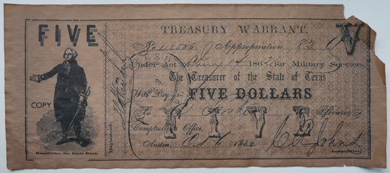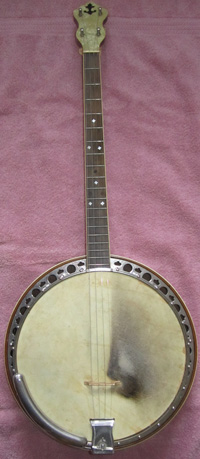 |
|
|||
 |
 |
|||
Copyright © Harry Rinker, LLC 2015 Questions
and Answers
QUESTION: Some 30 years ago, I purchased an amber canning jar at auction. The front has embossed letters reading: “Trade Mark / Lightning.” The bottom is marked “Putnam /402.” If I remember, I paid $10.00 for it. What is its value today? – M McB, New Galilee, PA ANSWER: In 1882, Henry William Putnam of Bennington, Vermont, invented a fruit jar closure consisting of a glass lid that was secured by a wire bail that attached to the jar. The closure was called “Lightning.” The closure revolutionized the fruit jar industry. Other manufacturers quickly copied Putman’s closure. Putman jars come in a wide variety of sizes – ½ pint, pint, quart, gallon, and 3 gallon—and colors—honey amber as well as other amber shades, aqua, cornflower blue, citron, clear, cobalt, apple green, emerald green, dark olive green, teal, and yellow. Amber is among the most common of the colors. [See: http://www.bottlepickers.com/bottle_articles80.htm] The best fruit jar reference book is Douglas M. Leybourne, Jr.’s “Red Book No. 11: The Collectors Guide to Old Fruit Jars,” published by the author and available at www.redbookjars.com/buy/. Doug is an example of a select group of individuals in the antiques and collectibles trade who devote themselves to researching and documenting a specific collecting category. Two examples of amber Putnam Lightning fruit jars sold on December 3, 2015 on eBay. A light amber jar realized $46.00 plus shipping. A dark amber jar brought $62.00 plus shipping.. Bidding was brisk on both. Remember, the number of bids is not the same as the number of bidders. The same bidder may submit numerous bids. Having noted this, collector interest appears strong. An eBay seller has a Putnam #402 fruit jar listed with a “Buy It Now” price of $69.99. It has not sold. My recommendation is to take a conservative approach to value. Think between $30.00 and $35.00. Your $10.00 investment was a wise one, albeit you will not recover your initial cost or any profit until you sell your example. While researching this question, I found an article by Bob Clay entitled “Lightning-Type Reproduction Fruit Jars.” [http://www.realorrepro.com/article/LightningType-Reproduction-Fruit-Jars] A ½ pint jar was produced in Taiwan circa 1985-1989 in amber, aqua, sky blue, and lime green. The reproductions have no mold number with the exception of some embossed “PUTNAM 227.” The amber quart reproduction also is marked “PUTNAM 227” on the bottom. QUESTION: In going through an estate, I came across a Texas Treasury Warrant, a little bigger than a standard-size dollar bill. It is on brown parchment paper. The left panel has “FIVE” above a standing, classical-attired figure, and “Redeemable for State Dues.” “COPY” also appears in the panel. The Warrant is dated October 1, 1862 and indicates it is payment for military service payable by the Treasurer of the State of Texas Comptroller’s Office in Austin. The paper measures 7 1/4 inches by 3 1/4 inches. The upper right corner appears to have been burned. Does is have any historical or monetary value? – KJ, Bozeman, MT, Email Question
ANSWER: Texas issued a wide variety of Treasury Warrants during the Civil War period. Period examples sell between $150.00 and $250.00 if in very good or better condition. Alas, your example is a 20th century reproduction, a product of the Historical Documents Company of Philadelphia. {See: www.histdocs.com]. While not all products of the Historical Documents Company are clearly marked as copies, your Texas Warrant is. The other clue that the Texas Warrant is a reproduction is your comment that it is on “brown parchment paper.” Charles Promisto, a Philadelphia druggist, accidentally spilled a beaker of chemicals onto some papers in 1925. When he returned the next morning to his laboratory, he noted the paper was wrinkled and aged in appearance. He founded the Historical Documents Company, spending several additional years perfecting an 11-step aging process. Historical Documents Company launched its products at the 1939 New York World’s Fair. Historical Documents Company is still family owned. It currently offers parchment-like reproductions of over 500 different documents. Your 1862 five dollar Texas Warrant is part of the Confederate Banknotes Set B (Item #805) described as “six antiqued reproductions of original Confederate banknotes. These unique reproductions are so like the originals you won’t believe they are not. The antiquing process creates a banknote that looks and feels old….” I bought my first Historical Documents Company product, a copy of the Declaration of Independence and a set of Continental currency, when I visited Independence Hall as a Cub Scout in the late 1940s. A trip to Gettysburg resulted in a copy of Lincoln’s Gettysburg address. Difficulties arise when a person who purchased Historical Documents Company products in the 1940s, 1950s, or 1960s dies. Heirs find these reproductions and assume they uncovered a small fortune. The rule is simple. If a historical document looks like crumpled parchment and has a tea-stain brown tone, the odds are 1,000 to 1 the document is a product of the Historical Document Company.
ANSWER: Your tenor banjo was made by Stromberg-Voisient. However, it may not have been marketed by Stromberg-Voisient. The company made banjos for wholesalers and others, adding their brand markings to the finished product. The blog http://theukaholic.blogspot.com/2012/02/ stromberg-voisinet-tenor-banjos.html contains a picture of a banjo with a rose inlay identical to the one on your banjo. The caption reads: “here’s their [Stromberg-Voisient] tenor version of the ‘Rose.’ This brand, Howard, was sold by Wurlitzer, but clearly, Stromberg-Voisient supplied the instruments for Howard, an example of a double-jobber.” Stromberg-Voisient began as the Groeshel Mandolin Company in 1890. The company was headquartered in Chicago, a major manufacturing center for musical instruments. In 1921, the Groeshel Mandolin Company became Stromberg-Voisient. Henry Kay Kuhrmeyer joined the company in 1923. Stromberg-Voisient made tenor banjos, tenor guitars, mandolins, and 6-string guitars. Henry Kay Kuhrmeyer acquired the company in 1928, just as the company introduced the first commercial electric guitar, the Stromberg Electro. An identical banjo to the one you own is currently for sale on www.banjobuyer.com. [See: http://www.banjobuyer. com/banjo/37267] The asking price is $350.00 with free shipping. There are many comparable examples offered for sale on eBay. The average asking price is higher. Keep in mind that the restoration of your father’s banjo falls into the amateur/semi-professional category. A professional restoration increases the value by another 15 to 20 percent. QUESTION: I have a Clichfield China platter that has a brown glaze and an image of two pheasants. The number on the back is “6-25.” I do not know its value. Can you help? – KB, Owings, MD, Email Question ANSWER: This is not an easy question to answer. Your email did not have an attachment showing the platter image or a detail of the mark or indicate the size the platters. I am going to assume that your Clichfield China platter (1) has a Clinchfield crown back stamp, meaning it was produced by Southern Potteries Incorporated and (2) the image of the two pheasants were applied as a decal. In this instance, china is used in its broadest sense. Hold your platter up to a light. If you can see light through the body, the piece is porcelain. If not, which is my guess, the platter is glazed over earthenware. Platters come in a variety of sizes. Again, I am going to assume that your platter is somewhat smaller than a turkey platter. If this is the case and there is no damage to the platter or the decorative motif, its value is between $60.00 and $80.00. If the platter is turkey size, double the value.Harry L. Rinker welcomes questions from readers about
collectibles, those mass-produced items from the twentieth and twenty-first centuries.
Selected letters will be answered in this column.
Harry cannot provide personal answers.
Photos and other material submitted cannot be
returned.
Send your questions to: Rinker on Collectibles, 5955 Mill
Point Court SE, Kentwood, MI 49512.
You also can e-mail your questions to
harrylrinker@aol.com.
Only e-mails containing a full name and mailing address
will be considered.
You can listen
and participate in
WHATCHA GOT?, Harry’s
antiques and collectibles radio call-in show, on Sunday mornings between 8:00 AM
and 10:00 AM Eastern Time.
If you
cannot find it on a station in your area,
WHATCHA GOT?
streams live on the Internet at www.gcnlive.com.
SELL, KEEP OR TOSS?: HOW TO DOWNSIZE A HOME,
SETTLE AN ESTATE, AND APPRAISE PERSONAL PROPERTY
(House of Collectibles, an imprint of Random House Information Group, $17.99),
Harry’s latest book, is available at your favorite bookstore and via
www.harryrinker.com.
|
||||

 QUESTION: My dad just turned 98. In the early to mid-1930s, he was in a small band. A year ago, I had his banjo cleaned up and installed new strings. It sounds fine. There is no name on the banjo, but the back has an elaborate rose inlay. Can you help me identify the manufacturer and the value of the banjo? – R, Parryville, PA, Email Question
QUESTION: My dad just turned 98. In the early to mid-1930s, he was in a small band. A year ago, I had his banjo cleaned up and installed new strings. It sounds fine. There is no name on the banjo, but the back has an elaborate rose inlay. Can you help me identify the manufacturer and the value of the banjo? – R, Parryville, PA, Email Question